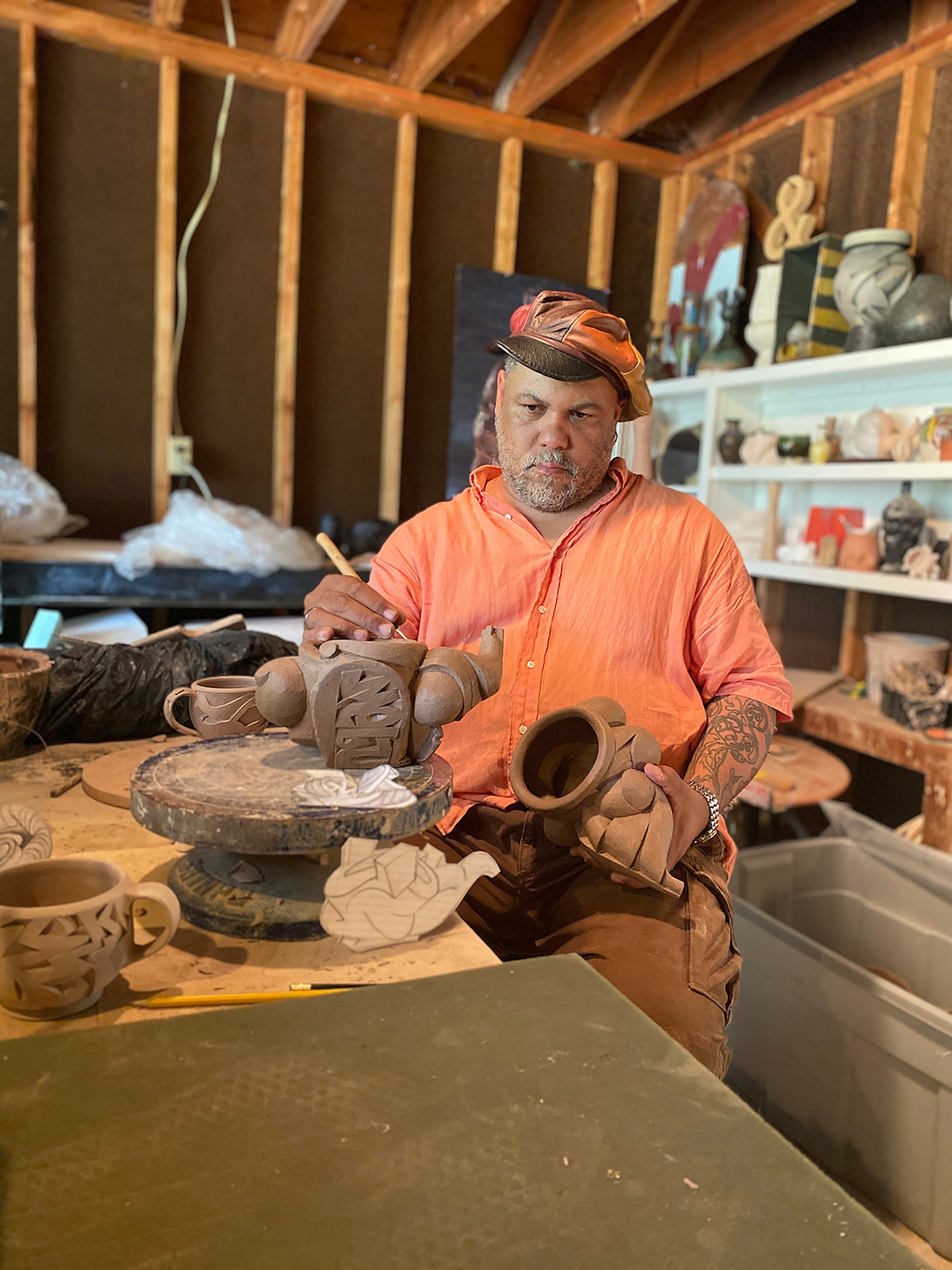Spotlight: America(s)
American Design Stories: Malcolm Mobutu Smith
The Indiana-based ceramicist talks about identity, community, and the influence of Jazz and Hip Hop on America's character
In the American Design Stories series, we ask designers from across the Americas to share their insights on American design today, along with three images that represent their vision of American design.
This week, we had the chance to speak with Malcolm Mobutu Smith, an Indiana-based artist who melds Hip Hop culture’s energy and aesthetic with time-honored ceramic traditions. Working primarily with wheel-thrown and hand-built forms, Smith’s approach is highly improvisational—inspired in large part by his background as a graffiti artist and breakdancer.
What makes your American story unique?
Born in 1969, the son of brave artist parents, one black and one white, I am the embodiment of the hopes, dreams, and aspirations of an American experience promised by a civil rights era bridging the white and black divide. My life as a maker and educator has, from the start, benefited from a multifaceted and polylingual perspective gifted to me by virtue of this twin membership of diverse heritage and communities. I represent success from both vectors, as I claimed the privilege and support of not being a first generation college graduate from either side of the racial aisle. My access to and thirst for knowledge has been buoyed by my amazing families and potent teaching mentors.

What does “America” mean to you?
America is a complex crossroads for peoples, traumas, and potentials. A place riddled with productive frictions of histories, operationally vulnerable enough to allow for diverse voices, and vast in its capacity to hold up and support the visions of many agents in simultaneous exploration of creative truths.
What American stories are you telling with your work?
My work is a filtering of many influences, underpinned chiefly by the uniquely American aesthetic impulses derived from Jazz and Hip Hop. Both Hip Hop’s and Jazz’s influence on our country and the world is hard to overstate. My participation as a practitioner in Hip Hop—specifically through beatboxing, breakdancing, and graffiti—granted me agency as an artist, researcher, and advocate and gave rise to both the origins of form in my work but also the methodologies of their making. Distinctly improvisational in approach, all my work is a riffing on vessel hood, color, linear and graphic—not to mention the mixing board of art historical reference from the mélange of world cultures that America brings together.

What identity obstacles do you face in your work?
Identity and race, two sides of a single coin, are contextual truth for all my work, whether explicitly or implicitly evidenced in it. I am seen as a black artist/educator, and this quality of blackness moves me, follows or advances before me in all that I do and make. The primary obstacle is for the work to operate as works of art not works of black art. I can often fool myself into believing that I have left this umbrella, but too often the work and my agency as an artist is coded under the identifier of color and race. The catch-22 of opportunity is the uncomfortable truth of a life in brown skin.
How have current crises figured into or impacted your studio’s experience and approach?
The pandemic and lockdown called me to advance my work through the completion of my home studio and to make works that were more directly focused on utility. I chose to make mugs for drinking while also seeking to preserve the essence of my aesthetic impulses. In this case, the marriage of utilitarian object and jazzy art form wrapped in the dancing improvisation manifest by carved forms into a decorative celebration of line, tactility, and ergonomic invention. This exploration has helped me temper or harness the visual language of a jazzy horror vacui in the guise of a useful mug.

Do you have a personal mantra?
I believe the health of a whole community is built from the robust self-reliant and self-confident unit self—the atomic individual. Each individual can generate within oneself a reifying engine of recursive impulses: Of the self, by the self, and for the self. Hence, continually locating the must of creative energies to both feed the self and produce new forms for the world community.
Where do you look for strength?
Family, my community of artist-educators, and students collectively form the pools of supportive strength that guides me on my path as maker, thinker, and educator.
Thank you, Malcolm! ⬥
Malcolm Mobutu Smith’s ceramic work is included in Design Miami/ Podium 2020.
Smith is an artist and teacher, currently associate professor of ceramic art at Indiana University in Bloomington, Indiana. He earned an MFA from the New York College of Ceramics at Alfred University in 1996 and studied at both the Kansas City Art Institute and Penn State University, receiving a BFA in ceramics in 1994.
His works are represented in numerous private and public collections around the world, including The Luise Ross Gallery, Nerman Museum of Contemporary Art, FuLe International Ceramic Art Museum in Beijing, and the Indiana State Museum.
Inspired by the 2020 Design Miami/ Podium theme America(s)—and all the complexities that go along with it, especially in this moment—Anna Carnick and Wava Carpenter of Anava Projects connected with a selection of outstanding designers with personal ties to the Americas to get their take on “American” design today. Their responses were insightful, inspiring, and diverse: From thoughts on the most pressing issues and challenges facing designers now, to hopes and suggestions for a more equitable future, and reflections on their own American design journeys to date. Each story is accompanied by images provided by the designer that embody what America(s) or American design means to them.
